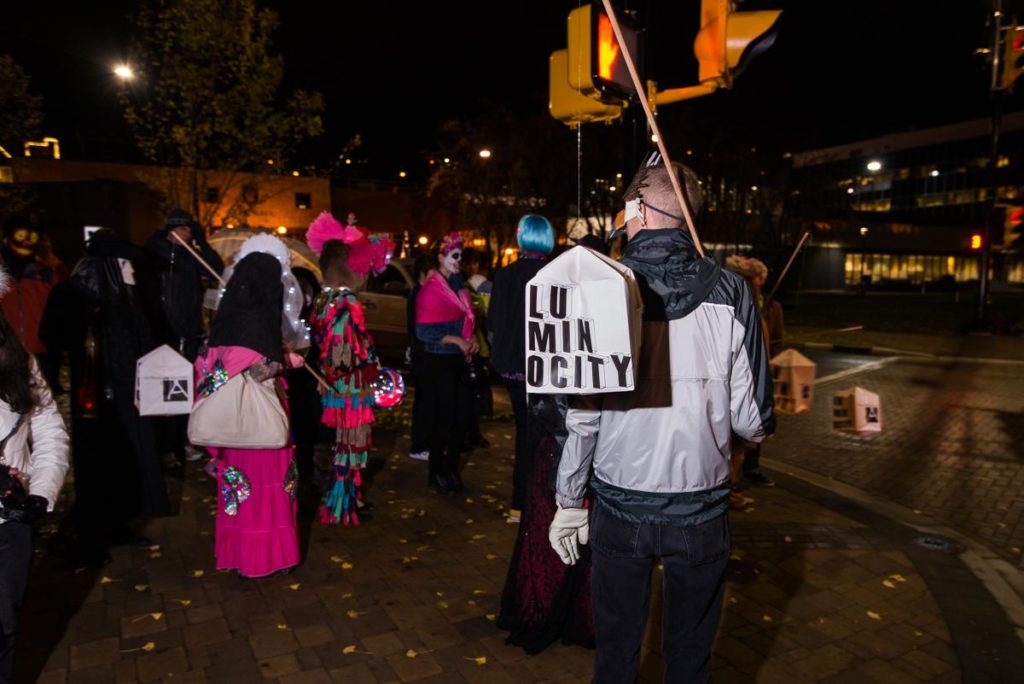A relatively recent development in Vancouver’s cultural ecology has certain of its participants packing up and moving on. Some go to Europe, where the standard of living—and the conversation—is more to their liking; others, to British Columbia’s less populated rural areas, where rents and property are cheaper, and where opportunities in the arts have blossomed.
While the Vancouver Island nexus of Victoria, Nanaimo and Comox has emerged of late with remarkable exhibitions instigated by curators Michelle Jacques (“Girls: Historical Portraits from the Collection,” Art Gallery of Greater Victoria), Jesse Birch (“Black Diamond Dust,” Nanaimo Art Gallery) and Grant Shilling (“The Book of George: The Life and Art of George Sawchuk,” Comox Valley Art Gallery), a similar flourishing has occurred in the province’s Okanagan region, particularly with the addition of Hornby Island–born Charo Neville at the Kamloops Art Gallery.
A graduate of the University of British Columbia’s critical and curatorial studies program, Neville has for the past three years contributed to what is arguably the province’s most dynamic gallery program outside of the Lower Mainland—a renaissance that began with the KAG’s co-presentation of Rebecca Belmore as the Canadian representative at the 2005 Venice Biennale, and continued under Neville’s mentor, curator Annette Hurtig, who passed away in 2012.
Now ensconced at the KAG, Neville, whose previous exhibitions include co-curating Esther Shalev-Gerz’s “WHITE-OUT: Between Telling and Listening” (2012) and organizing the group show “Landscape Revised” (2013), has launched a project that exceeds not only the walls of the white cube, but presents challenges to those whose understanding of art begins and ends within the comfort of those walls.
Taking her cue from the international Nuit Blanche phenomenon that took flight in Paris in 2002, Neville gives us Luminocity: a week-long public art project that places video projections, installations and performances in civic spaces known more for consumption and blithe leisure than a questioning of how these spaces form their own cubes, enforce their own limitations.
Although I did not stay in Kamloops the entire week, I was present on opening night, which had interested parties gather at dusk outside the KAG for a Halloween face-painting session, followed by a Lost Souls Parade down a largely vacant Victoria Street to Riverside Park, where video installations by Derek Brunen, Dana Claxton and Doug Buis glowed outside a bandshell occupied by party-throwers Instant Coffee. Along the way, videos by Cao Fei, Isabelle Hayeur and Holly Ward loomed ghostlike against the bare sides of buildings, while those of Khan Lee, Brian Howell and Stephanie Patsula were available behind glass storefronts.
Of these works, the best known—and perhaps the most apropos of the evening—was Cao’s Cosplayers (2004). In this eight-minute video, Chinese youth act out their favourite anime and manga characters in public space, but also in their homes, where they slump like powered-down androids. Among the largest video projections were Hayeur’s Losing Ground (2009) and Uprooted (2012), which, like the “landscape of the economy” pictures of Roy Arden, concern themselves with the interstitial spaces between nature and suburban development. To continue with the taxonomy of the petit genres, Patsula’s Forum (2014) mines the Kamloops Museum to present a curious still-life display of its artifacts and a video scroll of their cataloguing set inside the institution’s sidewalk windows.
Another work that appeared behind glass was Lee’s Shunt (2014). Commissioned by Neville for Luminocity (though the work is available inside the KAG and through the windows that line its entrance until December 31), Shunt is an ambitious multi-channel video projection of a freight train as it switches (or shunts) its cars for the next leg of its journey. Apart from the questions this montage work asks of its making (and indeed of Canada’s political-economic emergence and the resultant consequences), Shunt is an apt metaphor for what Luminocity might add or subtract from a program that, as Neville hopes, is here to stay.









